Disclosure: I sometimes earn products or commissions from affiliate links or partnerships on my blog. I only recommend products and services I trust to serve you. Learn more.
Living off the grid seems like THE DREAM for so many people. The idea of not relying on power and water companies and not paying their high bills is certainly appealing. There’s something romantic about the notion of living in a home that allows the freedom of self-sufficiency. But is it really everything you THINK it is?
In 2015, we bought 16 acres of pure off-grid heaven and set out to build our own cordwood home from scratch.
We built our house over a period of roughly 2 1/2 years. Our house is off the grid, meaning that we:
- Generate power via solar panels
- Collect rainwater for household use via the roof
- Use propane for water heating and cooking (our one real outside utility besides the internet, which is powered by LTE)
At the time of this writing, it has been roughly eight months since we moved into our cordwood home and nearly one year since we installed our solar power system. It’s amazing how much one can learn in a year’s time about living in a home without grid power or water.
Is it like we thought it would be? Is it wildly different than living in a “normal” house? Here’s what we’ve learned living off the grid:
The 10 Lessons We’ve Learned Living Off the Grid
10. Living off the grid doesn’t mean we’re suddenly rustic pioneers of old.
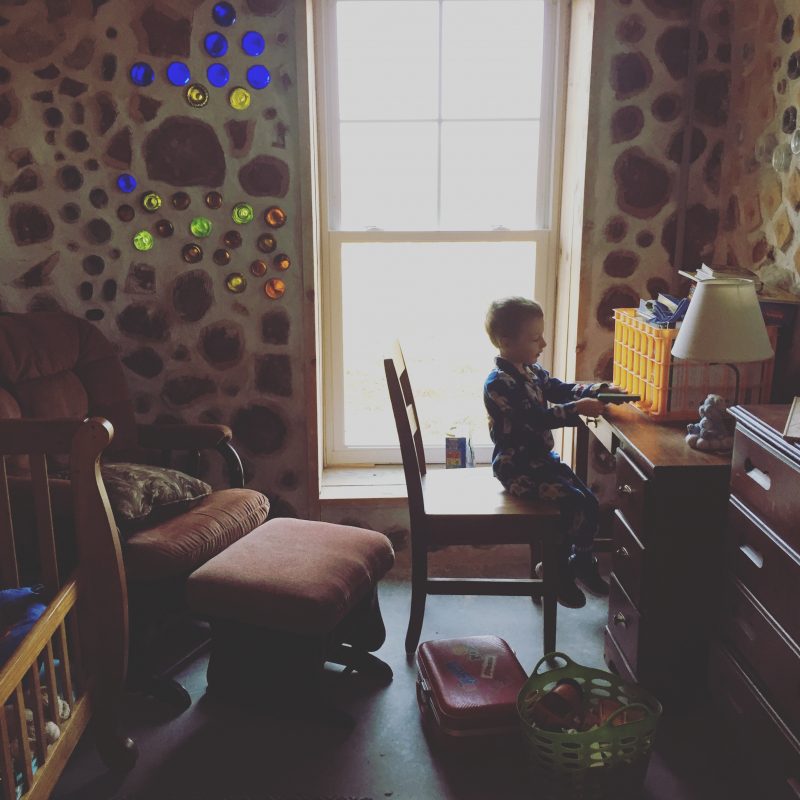 I mean, unless that’s what you WANT it to mean. You do you. There are a lot of different ways to live a life, and that includes how you do off-grid living. My husband still has a job in his chosen field. I take my kiddo out most days to the library, parks, museums, and to play with friends. We still find ourselves mindlessly browsing Facebook more than we ought to. In other words, our life is pretty normal. On the other hand, we’ve gone down the homesteading rabbit hole of self-sufficiency, preparedness, permaculture, homeschooling, and home-based business. I honestly credit our house project and the networking I’ve done because of this blog with me learning ANY of that stuff. Off-grid living has opened up a world of possibilities for us.
I mean, unless that’s what you WANT it to mean. You do you. There are a lot of different ways to live a life, and that includes how you do off-grid living. My husband still has a job in his chosen field. I take my kiddo out most days to the library, parks, museums, and to play with friends. We still find ourselves mindlessly browsing Facebook more than we ought to. In other words, our life is pretty normal. On the other hand, we’ve gone down the homesteading rabbit hole of self-sufficiency, preparedness, permaculture, homeschooling, and home-based business. I honestly credit our house project and the networking I’ve done because of this blog with me learning ANY of that stuff. Off-grid living has opened up a world of possibilities for us.
9. Living on solar power isn’t really all that different from being on grid power.
We were a bit concerned at first that our 1.14 kW system wouldn’t be quite enough for our power needs, but for 3/4 of the year, it is a virtual non-issue. Our power usage is definitely more calculated in the winter months, but through spring, summer, and fall our system is almost always full or close to it. We have enough power with our system to run everything we need and then some. Yes, even at night. The battery bank supplies power on demand, so as the panels change their output you don’t notice it in the house. You can read about the basics of an off-grid system here
Before living here, I thought I’d have to change my entire charging routine based on the sun. In reality, very little has changed. At the most, I plan out energy-intensive chores based around the weather. Vacuuming takes lots of wattage so I do that on sunny days, and I do laundry on sunny days since we don’t have a dryer. Long story short: most of the time I honestly don’t notice our house runs on solar. We’re just more mindful of our usage. It performs just like a normal grid-connected house.
8. We have more than enough water for everything.
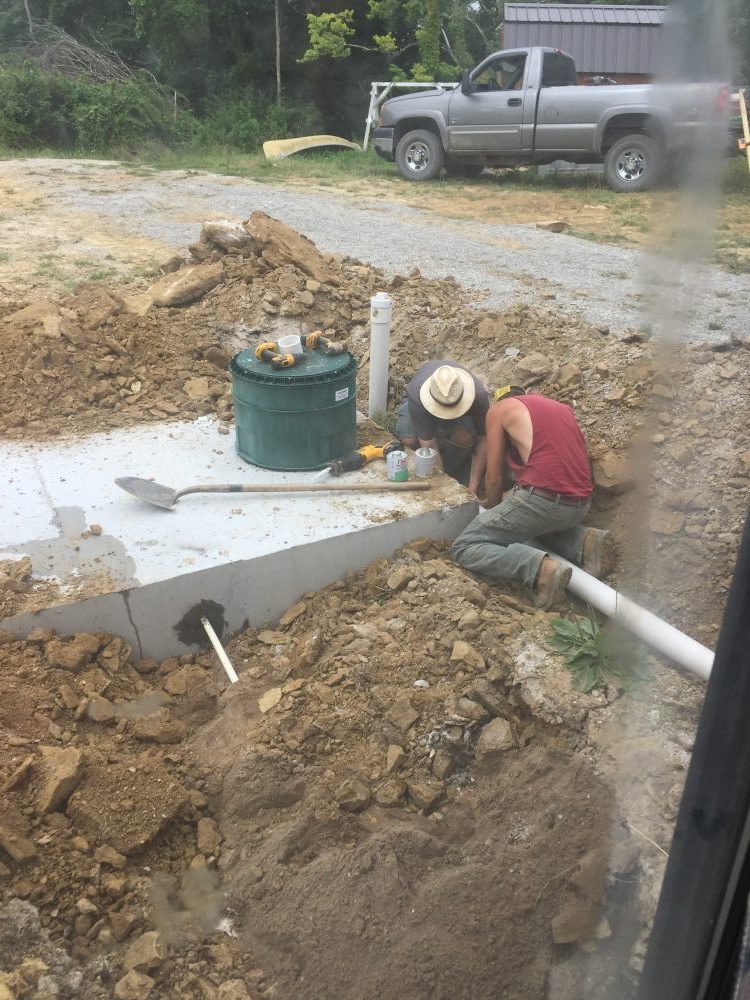 Contrary to the random assertions from alarmist Facebook posts, it is NOT illegal to harvest rainwater. We have a 2400 gallon precast concrete cistern. We catch rainwater from our metal roof and direct it to the cistern via 6″ seamless gutters. You can read more about the entire system here.
Contrary to the random assertions from alarmist Facebook posts, it is NOT illegal to harvest rainwater. We have a 2400 gallon precast concrete cistern. We catch rainwater from our metal roof and direct it to the cistern via 6″ seamless gutters. You can read more about the entire system here.
We don’t currently have any meters on our cistern – we just open the hatch and look inside. We each think to look maybe once a week or every couple of weeks, and I haven’t seen it any lower than maybe 75% full. The water is always pretty close to the top.
Granted, this has been a fairly wet year for us here in Kentucky. In drier years we may have to haul water, but we’ll see. We’ve been fortunate this year to have plenty of water to meet our needs.
7. The power NEVER goes out in a storm.
We’ve laughed, because whenever a big storm moves in we instinctively gear up for the power to go out. Over 30 years of living ON the grid will do that to you.
Even if our solar panels were to rip off in a high wind and blow away, we’d still have power because our battery bank is inside the house. We would only lose power if the front of the house where the battery bank is ripped away too, in which case we’ve got much bigger fish to fry.
So sorry, local friends. While y’all were posting on Facebook about how your power was off for a day or two during those big storms in July, I was sitting comfortably at home watching Netflix with the ceiling fans on high.
6. Not having power or water bills rocks, BUT…
YOU’RE ultimately the one responsible for keeping your systems up and running. If our power were to cut out for some reason, there isn’t a power company to call about it. WE are the people that have to fix it. Same if the water pump were to break down. Same for our radiant heat system. Self-sufficiency sounds amazing, and it is! But if the off-grid life is something you’re working towards you need to understand that some of the conveniences of modern grid life will become your responsibility along with a host of other things.
5. There are expenses to off-grid living you’ve never thought about.
Living off-grid has eliminated about $275 worth of monthly bills from our budget, which is pretty great.
Normally, I would say that money can all go straight to savings or paying down debt, but in our off-grid situation, some of that money has been “re-allocated” to some things we would never have needed to pay for in our suburban house. For example:
Generator Fuel: During the winter you’ll most likely need to give your batteries a boost to keep them in good shape. You never want to get them too low or you risk damaging them. We currently have a Honda eu2000i but would like to get something a bit more robust for future winters.
Off Grid Internet: Whether you choose an LTE or satellite service, one thing is clear: you will pay way more money for slower speeds. And if you’re like me and you make money working from home on the internet, you want something reasonably fast. I’m actually writing this at home, but I also love writing at the library.
Driveway Maintenance: Our driveway is a half a mile long and is all gravel. We knew that it was something we’d deal with so we budget, save, and work accordingly. We got 6 loads of gravel this year to the tune of $2400 (5 for the driveway and 1 to make a parking pad). Ouch. If you’re starting from scratch, hopefully you find something with less of a driveway to maintain.
4. Things will inevitably be harder than you think.
 For example, the fact that we have a long gravel driveway means that we have to maintain it regularly. That means time out with the tractor and the grader blade, or on foot with rakes and shovels. That means maintaining said tractor and paying to repair it when you rip apart a tire or have mystery leaks.
For example, the fact that we have a long gravel driveway means that we have to maintain it regularly. That means time out with the tractor and the grader blade, or on foot with rakes and shovels. That means maintaining said tractor and paying to repair it when you rip apart a tire or have mystery leaks.
It means I am less than thrilled in the winter with taking harrowing, white-knuckle trips down the hill at 2 mph in my Escape because the snow only melted part way and refroze overnight on the curves and slopes.
And sometimes, it means the anticipation of meeting the UPS or FedEx guy head to head is enough to make me just stay home until it’s been delivered. And yes, UPS and FedEx WILL drive up our crazy half mile driveway. I googled that one a bunch before we even bought our property. Not to mention…
3. We think more about security.
Not all off-grid properties are as far removed from the road as ours, but many are. Isolated properties are great if you don’t want to see your neighbors or have them see you, but there’s a downside to the isolation. We had a very scary incident this past spring where I awoke to find a masked man prowling around our property. Turned out he’d committed several crimes before he wound up at our place. It was a very confusing and frightening morning that ended up being okay. We got very lucky, but it’s made us think a LOT more about security and preparedness. After all, what do you do when dispatch tells you an officer is close by and it still takes them 12 minutes to respond? In addition to home defense and security…
2. We think more about preparedness in general.
At our old house, we could order a pizza in a driving snowstorm and still have it delivered in under 30 minutes. Not kidding. That’s not exactly the case when you live farther out in the country with aforementioned half mile driveway. It’s driven a mindset shift in both of us to make our homestead a safe and sufficient place to live. Having enough firewood for the winter by prepping during the summer is a good example of this. We also think a lot more about the kinds of foods we keep around and their perishability. We evaluate our reliance on certain items and try to figure out how to either make them, stockpile them, have reusable versions of them, or just plain do without them. And finally…
1. Off-Grid living is NOT the magic bullet for financial independence, but it’s a good start.
 Don’t get me wrong, living off the grid plays a pretty significant role in our path to complete financial independence. But I would be foolish to tell you it’s a surefire path to self-sufficiency. You need to have good habits in place, for starters. That’s especially true if you’re doing this as a couple like us. Like I mentioned, there are a lot of expenses that can come with living off the grid. Those expenses can be more or less, depending on how you do it, but that’s reality. There will always be aspects of a lifestyle that you won’t see until you make it there. It’s okay to aspire to be self-sufficient. It’s okay to want to go off the grid. Heck, I encourage you to consider it! But don’t romanticize it to the point that you loathe your current status and think non-stop about quitting your day job to build a house and raise chickens. Appreciate where you are on your journey! Take time to research! Read blogs, watch videos, and talk to people who are actually doing it. Researching will go a long way toward creating long-term success.
Don’t get me wrong, living off the grid plays a pretty significant role in our path to complete financial independence. But I would be foolish to tell you it’s a surefire path to self-sufficiency. You need to have good habits in place, for starters. That’s especially true if you’re doing this as a couple like us. Like I mentioned, there are a lot of expenses that can come with living off the grid. Those expenses can be more or less, depending on how you do it, but that’s reality. There will always be aspects of a lifestyle that you won’t see until you make it there. It’s okay to aspire to be self-sufficient. It’s okay to want to go off the grid. Heck, I encourage you to consider it! But don’t romanticize it to the point that you loathe your current status and think non-stop about quitting your day job to build a house and raise chickens. Appreciate where you are on your journey! Take time to research! Read blogs, watch videos, and talk to people who are actually doing it. Researching will go a long way toward creating long-term success.
Ready to learn more?
Subscribe below to grab our free Homestead Builder’s Quick-Start Guide, plus access to the Members-Only Resource Library:
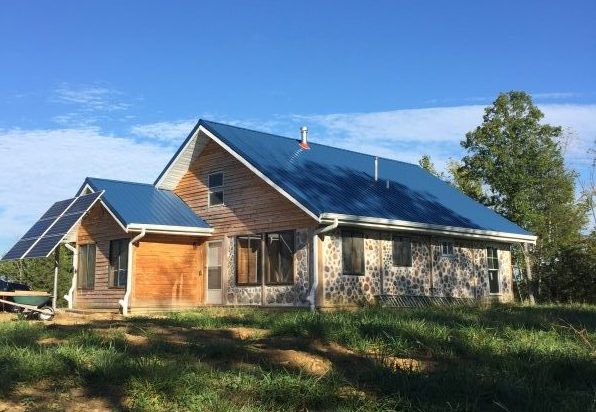
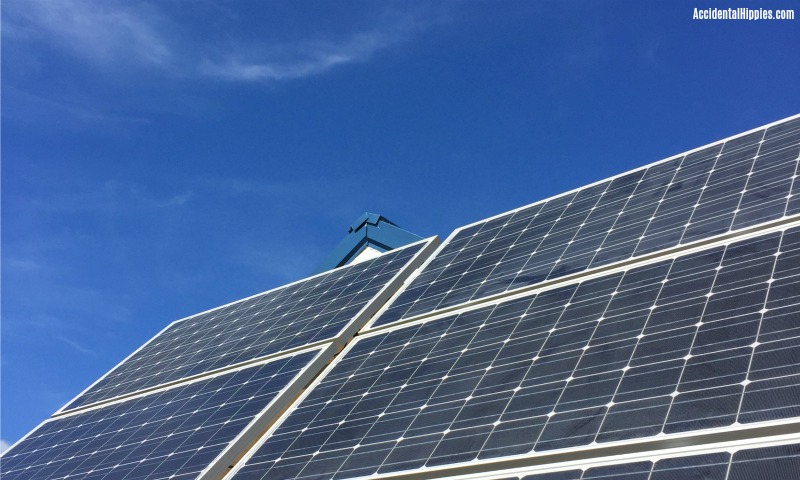

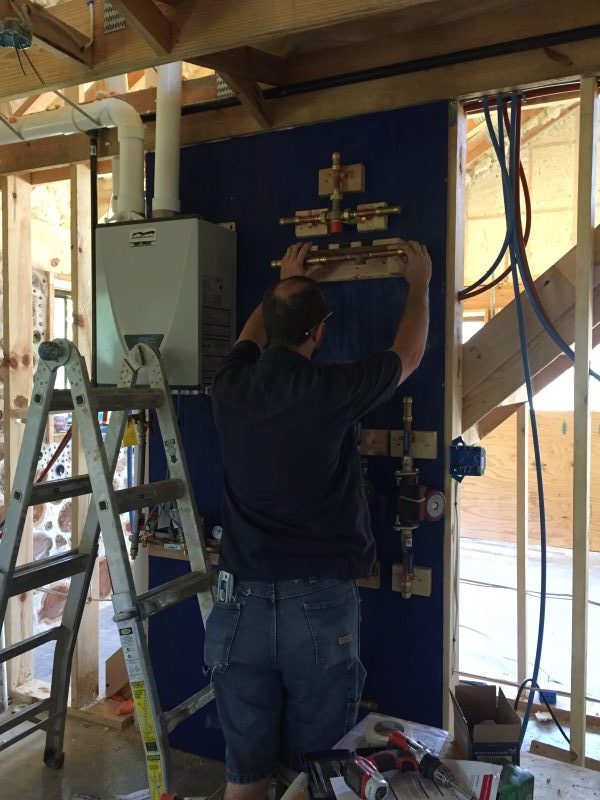
Great stuff!! Thanks for sharing!
Thanks so much! I appreciate your readership.
Emily, I think this is fantastic and that you and Mark are wonderful people. If I were about 40 years younger I’d be right at it.
Thanks so much, Tim. We certainly try our best. 🙂
Do you have air conditioning in the summer?
I would think Kentucky would be pretty hot in the summer.
We do not have any air conditioning, no. We have ceiling fans in every room, and the nature of cordwood construction with its insulation and thermal mass AND the passive solar nature of our home goes a long way in keeping us cool. That isn’t to say it never gets hot in here, of course. It was 100 degrees on July 4th and it was about 82 degrees in the house, but typically through the summer with average outdoor temps in the mid 80’s our house temperature is somewhere between 74-80 degrees.
Technically you’re still 100% ON the grid. Just an FYI. “Free” power (do you know how much of an ecological nightmare making solar planes is??) and water is but don’t pretend to be something your not.
I suppose it depends on your definition of off-grid. I mean, if we’re going to define it as “wilderness living with no modern amenities and no reliance on anyone from broader society” then yes, we are 100% on the grid. If you’re going to use the wider definition of “having a home that runs on some type of renewable energy (wind, solar, hydro, etc.) that isn’t connected to the power grid’s energy lines or to grid water”, then we are living off of the grid. I’m not pretending like we know everything about it or aren’t somehow reliant on others for the services we continue to enjoy. I state that pretty plainly. I simply want to share our story for the benefit of others who are looking to get into this sort of lifestyle. I even say that there are multiple ways to live a life right at the beginning, and that goes for exactly how off the grid a person chooses to be. Additionally, I’ve never pretended that solar power is 100% ecologically friendly. Yes, there are hazards to producing panels, as well as a reliance on others to produce them and the battery banks that accompany off-grid systems. That doesn’t outright negate the positive benefits of generating power via solar panels. Nor does it negate the fact that part of our solar choice was based on the cost benefit to us (i.e. over $20,000 just to run power lines to our house and then also pay power bills vs. $9500 for an entire solar power system and no bills). That doesn’t make solar power FREE, but it does make it more accessible for people like us. My hope is to reach others looking to build like this and use our experiences to help them to reach their goals. It’s often a messy and imperfect journey and I certainly don’t want to insinuate anything to the contrary. Hope that addresses some of your concerns, Jane. 🙂
CAN YOU PLEASE SING ME UP FOR YOUR NEWSLETTERS.
Added you. Thanks for your readership! Let me know if you ever have any questions!
This was a fantastic read and I commend you for responding to naysayers and negative nancies so professionally. That would irritate me so much. You are doing great, the blog is fascinating, and you keep doing you. I did have a question about solar panels (and perhaps you already answered this in another post and if that’s the case my apologies)– how much did it cost, what size panel for what size house, and did you install it yourself?
Thanks!
Aw thanks! I’ve touched on the solar specs in different solar posts but I have yet to do a dedicated write-up of our specific system and what it entails. One of my current projects is creating pages for each of our home systems to address these points. The quick version is is yes, we installed it ourselves. We worked with a company called Mr. Solar to create a package that would fit our budget and our needs. It ended up being around $9500 for everything, including random ancillary stuff at the end that our electrical inspector basically required us to do. Our system is 1140 watts of panels fed into a 500 aH battery bank (sealed lead acid AGM batteries), moderated by a Morningstar TS-M-2 charge controller and sent to the house via a 4000W MagnaSine inverter. Our house is 2 beds 2 full baths with a loft. Roughly 1100 square feet, give or take. We shifted certain loads to other power sources to use a smaller solar system. Our stove, fridge, and water heater all run on propane. We don’t have a dryer, furnace, or other large electrical loads. It’s mostly lights, our computers, water pump, pumps for the radiant heat system, and other odds and ends that use electrical power. Hope that helps!
Yes, very much so. Thank you.